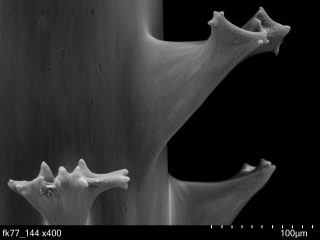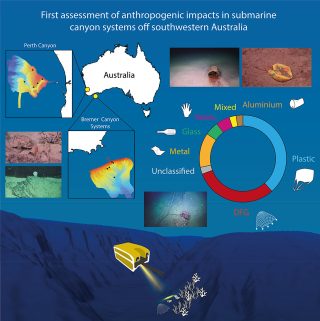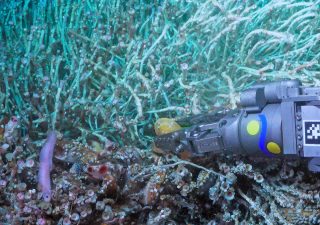Four New Black Coral Species Described Following R/V Falkor Expedition
 Four new species of black corals from the Great Barrier Reef and Coral Sea, collected during R/V Falkor’s 2020 expeditions, Seamounts, Canyons, and Coral Reefs of the Coral Sea and Northern Depths of the Great Barrier Reef, were recently described by Jeremy Horowitz of the Smithsonian Institute alongside colleagues Tinda Molodtsova of the P.P. Shirshov Institute of Oceanology, Robin Beaman of James Cook University, and Dennis Opresko of the Smithsonian Institute. An additional species was discovered in shallower depths by SCUBA divers. Little is known about the taxonomy of black corals because they typically occur deeper than SCUBA depth– making them difficult to collect. Very few taxonomists specialize in black coral identification, and it can be challenging to differentiate between the corals with few morphological features separating them. The four species discovered via sampling on board R/V Falkor were: Antipathes falkorae, Rhipidipathes helae, Aphanipathes flailum, and Hexapathes bikofskii. In particular, Antipathes falkorae is characterized by wild skeletal spines and named in recognition of the expedition aboard R/V Falkor.
Four new species of black corals from the Great Barrier Reef and Coral Sea, collected during R/V Falkor’s 2020 expeditions, Seamounts, Canyons, and Coral Reefs of the Coral Sea and Northern Depths of the Great Barrier Reef, were recently described by Jeremy Horowitz of the Smithsonian Institute alongside colleagues Tinda Molodtsova of the P.P. Shirshov Institute of Oceanology, Robin Beaman of James Cook University, and Dennis Opresko of the Smithsonian Institute. An additional species was discovered in shallower depths by SCUBA divers. Little is known about the taxonomy of black corals because they typically occur deeper than SCUBA depth– making them difficult to collect. Very few taxonomists specialize in black coral identification, and it can be challenging to differentiate between the corals with few morphological features separating them. The four species discovered via sampling on board R/V Falkor were: Antipathes falkorae, Rhipidipathes helae, Aphanipathes flailum, and Hexapathes bikofskii. In particular, Antipathes falkorae is characterized by wild skeletal spines and named in recognition of the expedition aboard R/V Falkor.
New Science Publications
 First assessment of anthropogenic impacts in submarine canyon systems off southwestern Australia – Taviani M., et al., January 2023
First assessment of anthropogenic impacts in submarine canyon systems off southwestern Australia – Taviani M., et al., January 2023
Dr. Marco Taviani of ISMAR-CNR and his co-authors assessed anthropogenic impacts, including marine litter, on the submarine canyons of southwest Australia utilizing data collected on an R/V Falkor expedition led by Dr. Julie Trotter of the University of Western Australia. The canyons were first explored utilizing ROV SuBastian in 2020. The research determined these submarine canyons are much less impacted by debris than other canyons that have been documented globally. Animals dwelling on the seafloor, including deep water corals, are not yet affected by the macro litter in southwest Australia and set a baseline for future monitoring of the health of these ecosystems.

A new deep-sea eelpout associated with a hydrothermal seep on the Pacific Margin of Costa Rica – Frable B., et al., January 2023
A new species of eelpout, named Pyrolycus jaco, has been described from the deep hydrothermal vent environment Jaco Scar in Costa Rica by Benjamin Frable of Scripps Institution of Oceanography. Footage of the eelpout was collected during the Costa Rican Deep Sea Connections expedition aboard R/V Falkor in 2019, led by Dr. Erik Cordes of Temple University. The new species is differentiated from other Pacific species by having a shorter head, snout, jaw, and pectoral fins. This is the first vertebrate species to be described from the Jaco Scar hydrothermal seep site and is also the first representative of the Pyrolycus genus in the eastern Pacific Ocean. Video footage filmed by ROV SuBastian of the species in its natural habitat helped the authors describe the hydrothermal vents, which may contribute to some of the eel’s unique physiological characteristics.
We invite you to share the newsletter with your friends and encourage them to subscribe, so they do not miss our first-look at Schmidt Ocean Institute’s activities.
Winter Newsletter 2023 • Menu
Subscribe to our quarterly newsletter
